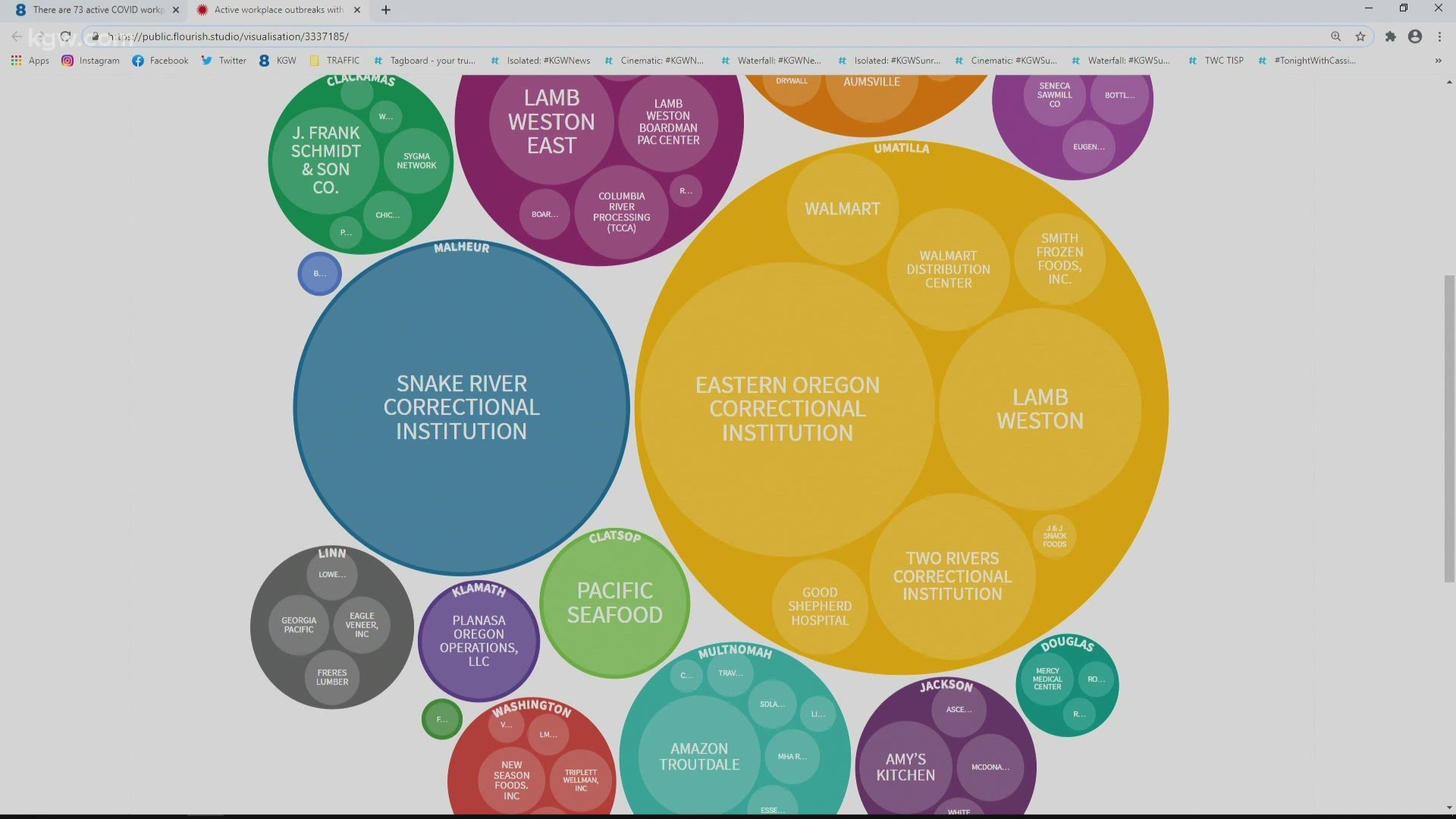PORTLAND, Ore. — Sarah Demerit said working as a clerk for a large grocery store chain during the COVID-19 pandemic has been scary and stressful.
“At first, they weren't sure what to do, so they wouldn't let us wear masks unless we had a doctor's note. And then they said we all had to wear a mask and then it was a certain kind of mask,” Demerit said.
She said everything from cleaning procedures to mask policies have been inconsistent.
Demerit worries about getting COVID-19 at work and bringing it home to her husband, a blind 63-year-old diabetic with underlying health conditions.
“There's no real choice for me right now that I see to stay home. So, I worry about taking it home to him every day,” said Demerit.
There are 73 active workplace outbreaks right now in Oregon. The Oregon Health Authority (OHA) tracks outbreaks of five or more employees at workplaces where there are at least 30 workers. An outbreak remains active if there has been a case within the past 28 days. The case count for each workplace includes everyone who is linked to the outbreak, whether they are workers or a close contact.
The largest active outbreak remains at the Snake River Correctional Institution in Ontario. The outbreak was first identified on June 24 and the case count has continued to rise since then. There have been 498 coronavirus cases linked to the outbreak, with the most recent onset reported on Sept. 30.
OHA said there have been 24 deaths associated with workplace outbreaks in Oregon during the pandemic.
Oregon's Occupational Safety and Health Administration (OSHA) has received nearly 12,000 COVID-19-related complaints from people since March.
During a normal year, the agency gets a little more than 2,000 complaints.
The state of Oregon and Oregon OSHA have been working together on COVID-19 guidelines for the workplace.
The most recent draft, released this week, includes stricter mask and distancing rules, some ventilation requirements and mandates employers to notify workers of a COVID-19 exposure within 48 hours.
The Oregon AFL-CIO is disappointed in the draft, saying the state could have required stronger ventilation requirements for keeping clean air circulating.
“For food processing plants in particular, the way they’re set up is kind of a Petri dish for COVID transmission. You have a lot of folks on manufacturing lines, often you have to speak really loudly to be heard because the machines are so loud,” said Jess Giannettino Villatoro, political director of the Oregon AFL-CIO.
Business groups have said business owners should not be expected to upgrade their HVAC systems right now because it is too expensive.
“We're willing to think about timelines that allow them to bring these protections online but also protect workers. Because what we can't have is basically the status quo and expect workplace transmissions to go down because that's obviously not working,” said Giannettino Villatoro.
OSHA spokesman Aaron Corvin said in an email to KGW that the current proposed rules remain in draft form.
“We value the feedback we’ve received from stakeholder groups, and we continue to engage with stakeholder groups,” Corvin said.
OSHA plants to adopt the rules Oct. 21 with an effective date of Nov 1.
Do you have something you want us to investigate? Email us at CallCristin@kgw.com

